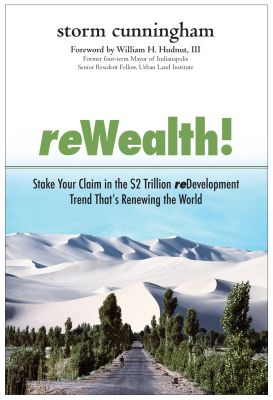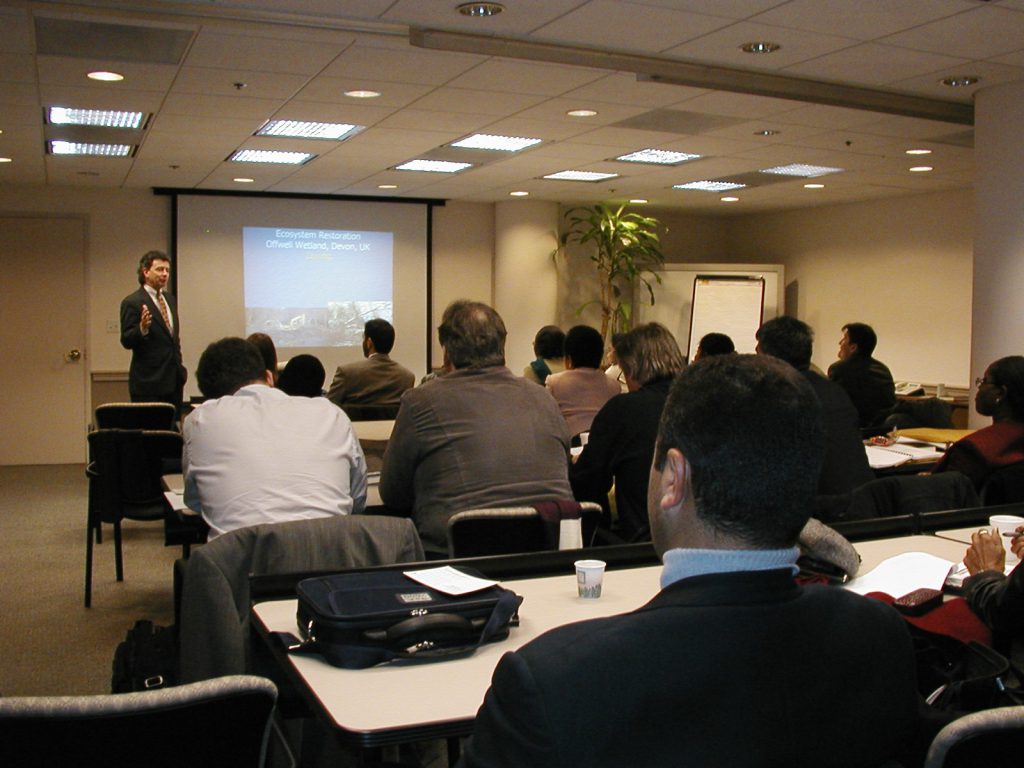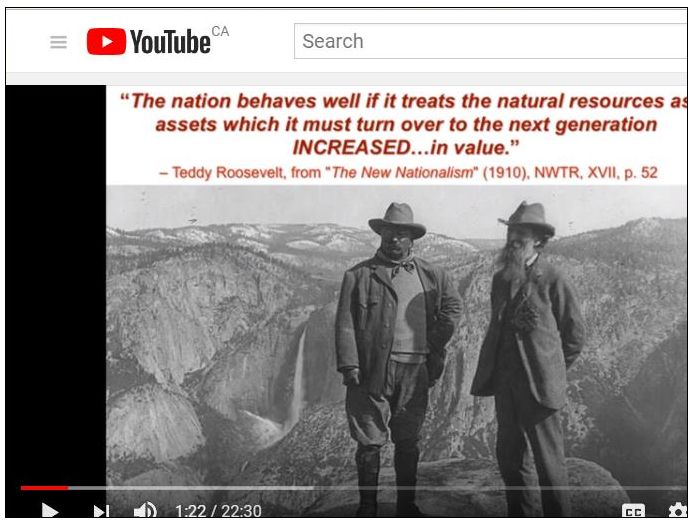RESTORATIVE DEVELOPMENT: “The process of restoring our planet and revitalizing our communities is finally becoming a rigorous discipline, with the proper education and tools,” stated Storm Cunningham, author & futurist (2010 TEDTalk)
Note to Reader:
The term ‘restorative development’ was coined by the writer Storm Cunningham in his first book The Restoration Economy, published in 2002. It was also the first book to document fast-growing industries that are renewing the natural and built environments.
 According to Storm Cunningham, three disruptive-but-positive trends are reshaping the design, planning, and implementation of regenerative projects in the 21st century, whether individual properties or landscape-scale initiatives: 1) asset renewal, 2) asset integration, and 3) stakeholder engagement.
According to Storm Cunningham, three disruptive-but-positive trends are reshaping the design, planning, and implementation of regenerative projects in the 21st century, whether individual properties or landscape-scale initiatives: 1) asset renewal, 2) asset integration, and 3) stakeholder engagement.
His focus is on how almost any discipline can become a vital contributor to the rapid, resilient renewal of communities and regions.
Storm Cunningham has evolved his message significantly since he posited the 3 factors that are listed above. For a taste of his latest thinking, visit: https://revitalizationnews.com/how-to-revitalize
Storm Cunningham might be the only revitalization facilitator who addresses all aspects of renewal; natural and cultural resources, urban and rural communities, industrialized and lesser-developed countries, etc. Storm Cunningham is the author of 2002’s The Restoration Economy, which has been hailed by government and business leaders around the world. His second book, reWealth (McGraw-Hill) was published in 2008.
To Learn More:
Watch Storm Cunningham deliver his TEDTalk in November 2010. The article below is extracted from a column by Korky Koroluk in 2008 that was published in the Daily Commercial News, a Canadian publication.
Dewealth, Preservative Wealth, and reWealth
 There are three types of wealth creation in this world, says Storm Cunningham.
There are three types of wealth creation in this world, says Storm Cunningham.
Destructive wealth, or “dewealth” is derived from depleting the earth’s resources and ecosystems and replacing them with such transitory assets as office complexes and shopping malls. It’s the model that enabled the building of new civilizations, but can also destroy them if they don’t shift into a renewal mode.
Then there is preservative wealth, which derives from preserving assets and maintaining systems, while neither depleting nor actively replenishing the world’s assets.
Finally, there is regenerative wealth, or “reWealth,” derived from replenishing natural and cultural resources, by restoring, reusing, renovating, regenerating the built environment.
That’s the premise of Cunningham’s book, reWealth! (2008), which serves almost as a handbook for readers following up on his earlier book The Restoration Economy (2002).
The Restoration Economy
 The Restoration Economy introduced the huge and multifaceted industrial opportunity that gave the book its title. It was the first book to encompass restoration of both built and natural environments, documenting the crises, disciplines and industries that lie beneath what Cunningham sees as a global trend toward renewal.
The Restoration Economy introduced the huge and multifaceted industrial opportunity that gave the book its title. It was the first book to encompass restoration of both built and natural environments, documenting the crises, disciplines and industries that lie beneath what Cunningham sees as a global trend toward renewal.
In reWealth! he makes a clear distinction between what he calls dewealth and rewealth economies. The first depletes resources, depletes wildlife habitat, degrades the environment, and, in return, yields something called progress. In contrast, a rewealth economy restores all those things, leaving everything better than it was when we found it.
In proposing rewealth, what he is really proposing is a new economic model.
“Making our old economic model greener and more sustainable,” he said, “is like inventing a healthier form of cancer, rather than eliminating it.”
The principles outlined in the book apply to every level of society, from neighbourhoods up. And they can be applied without spending a lot of money.

Storm Cunningham doing workshop for U.S. Department of State.
29 development experts from 19 countries, each with copy of The Restoration Economy provided by State Department.
Get the Language Right
He also advocates more rigour in the language used to describe desirable objectives — phrases like smart growth and sustainable development. These, he said are just “warm and fuzzy” phrases that are so imprecise that they don’t mean much.
“People tend to feel good about activities that fly under those flags,” he said, “but they often aren’t clear on exactly what it is they’re supporting.”
It’s easy to put a solar array on a roof and call the building green, he said, and that’s what some sprawl developers are doing.
But when you “green up an existing property, whether it’s a brownfield site, or a historic building, or an office building or whatever, you’re renovating that building using green technologies, and you’re not offsetting all that wonderful greenness with the consumption of new materials and the disposal of old materials.”
“That’s the real green, the ultimate green.”

To Learn More:
Storm started writing The Restoration Economy in 1996, just as brownfields redevelopment and ecological restoration emerged. That seminal 2002 book launched regenerative economics, and advanced today’s global “re” trends: resilience, revitalization, remediation, reuse, etc.
As publisher of Revitalization News, Storm tracks the latest thinking, projects, and trends in urban / rural regeneration, natural resources restoration, and economic / climate resilience worldwide.
Visit http://stormcunningham.com/


